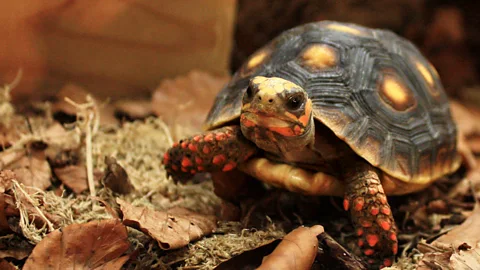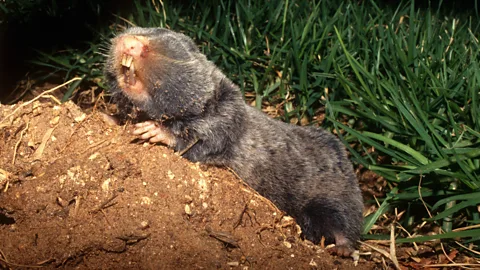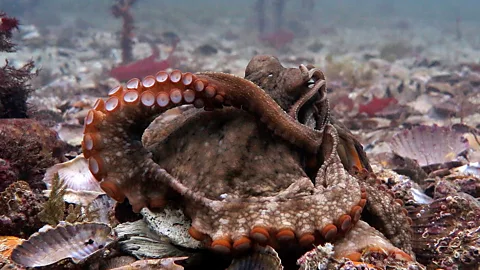

Martin Krondorfer
Exploring the Benefits of Solitary Living in the Animal Kingdom: Insights for Humans
The Middle Eastern blind mole rat epitomizes a true introvert. Dwelling about a foot below the surface, it creates intricate tunnel networks where it spends the majority of its life, foraging for roots, tubers, and bulbs. Each mole rat possesses its own territory – a necessity, as encountering another’s tunnel can lead to aggressive confrontations, including fierce bites and even fatal encounters.
Generally, blind mole rats engage with their counterparts only during the mating season. Even then, they move with caution; the male mole rat tunnels towards a female’s lair but hesitates before entering. Over several days, they communicate through vibrations, using their heads to drum against the tunnel ceiling. Only upon receiving a communicating signal from the female does the male proceed to mate and subsequently retreat to his solitary lifestyle.
Solitary living is surprisingly prevalent within the animal realm. Notably, among mammals—typically more social creatures—about 22% of observed species largely exist in solitude, foraging or hunting in isolation.
Despite their prevalence, solitary species have garnered relatively little scientific inquiry. Our inclination towards studying interaction-rich societies often overshadows those creatures that thrive in solitude. Historically, many researchers have regarded solitary living as a primitive or simplistic state, associating it with antisocial tendencies and lesser intelligence.
However, a shift in perspective is underway; experts now recognize that some solitary species have adapted to this lifestyle as a means to evade competition and the stressors that come with group living. Contrary to previous beliefs, numerous solitary animals demonstrate high intelligence and lead rich, multifaceted social lives, even if they often seem alone. Although blind mole rats may not fit this mold, many solitary animals tolerate, learn from, and on occasion, even cooperate with peers, striking a balance between solitude and social engagement.
As humans increasingly embrace solitary time, these creatures remind us of the positive aspects of solitude—living independently does not equate to loneliness. This is a sentiment worth reflecting upon, especially for those spending Valentine’s Day solo.
“By examining solitary species and their successful strategies, we can uncover valuable insights about the benefits of solitude for human society,” suggests behavioral ecologist Carsten Schradin from the Centre National de Recherche Scientifique in Strasbourg, France, who co-authored a 2024 review on solitary living in mammals.

Getty Images
Group living possesses significant advantages. Consider zebras that find safety in numbers and lions that often hunt cooperatively to take down swifter prey. Some avian species collaborate to rear their young, while chimpanzees bond over grooming. However, togetherness comes with its drawbacks. “In a group, every resource—be it shelter, food, or access to mates—must be shared,” notes David Scheel, a behavioral ecologist at Alaska Pacific University. “If a resource is not divisible, only one individual can benefit.”
While cooperative hunting and sharing are sensible for animals like lions that frequently encounter sizable prey, it becomes less efficient when dealing with smaller, non-shareable prey or when resources are scattered, requiring more effort to locate.
“Living solitarily often translates to being less visible,” explains Lindelani Mayuka, a zoologist at the University of the Witwatersrand in Johannesburg, South Africa, and co-author of the review with Schradin.
However, solitary life presents challenges, such as the lack of warmth gained from group huddling. Some creatures, like the bush Karoo rat from Southern Africa, counterbalance this by constructing extensive stick lodges to shield against temperature fluctuations and predators, as noted by Mayuka.
For highly social species, solitude can induce stress, potentially resulting in adverse health effects and anxiety. In contrast, solitary animals thrive on their own. For instance, the Middle Eastern blind mole rats exhibit signs of stress when placed near each other, even with barriers separating them, with more submissive individuals suffering the most.
“The stress levels can be so high they can be fatal,” explains Tali Kimchi, a behavioral neuroscientist at the Weizmann Institute in Israel, who conducts studies on blind mole rats in her lab. While blind mole rat mothers are dedicated to their young, they eventually become aggressive, pushing their offspring to dig out on their own. “Although it sounds amusing, it’s essential for their survival,” she explains.

Carsten Schradin
“Even animals that primarily lead solitary lives still engage in social interactions,” emphasizes Mayuka.
In fact, research indicates that some octopuses—once stereotyped as creatures that only meet for mating or cannibalism—can gather socially. At a location in Jervis Bay, eastern Australia, a particular species, the gloomy octopus, comes together due to the availability of shared shelter. This phenomenon began when one octopus accumulated discarded shells post-meal, eventually creating suitable sediment for others to burrow into, resulting in gatherings of up to 16 octopuses at a single location.
In this “octopus city,” the individuals experience a social environment far more crowded than they’re accustomed to, leading to intriguing behavioral adaptations.
Males may attempt to persuade females to remain nearby while chasing away competing males, which sometimes involves invading each other’s dens, resulting in tussles and evictions. Notably, evicted males might return to reclaim their dens, with aggressive interactions repeating. As they clean their living spaces, individuals often inadvertently displace debris into neighboring areas or even use their siphons to expel waste at one another, as noted by Scheel, who chronicled several of these interactions in a 2022 paper.
These behaviors, described as neither solely aggressive nor completely cooperative, are referred to as “jostling.” Scheel continues to explore the motivations behind these interactions, suggesting that placing solitary creatures into complex social settings might reveal that they are less isolated than previously imagined or that social pressures aren’t as overwhelming for them.
These thoughtful social dynamics highlight the cognitive complexities inherent in solitary species. Similarly, researchers have observed certain solitary reptiles carefully monitoring their surroundings and utilizing that information to solve challenges—an ability previously attributed solely to humans, as pointed out by behavioral scientist Anna Wilkinson from the University of Lincoln, UK. “Even species that don’t usually form intricate groups can display remarkable social learning capabilities,” she notes.

Peter Godfrey-Smith
In various experiments with red-footed tortoises, known for foraging solo yet encountering one another under fruiting trees, researcher Wilkinson set up a transparent V-shaped barrier featuring food inside. Initially, none could access the food until one tortoise was trained to do so. Upon witnessing a peer succeed, all other tortoises quickly followed suit. This remarkable learning phenomenon showcases reptiles’ capacity for imitation, an ability typically unrecognized due to their solitary hatching from eggs without parental guidance.
Insights like these are prompting scientists to reconsider solitary living as a spectrum rather than a uniform classification, ranging from individuals like the (arguably) aloof blind mole rat to those that predominantly live alone yet engage in mutual learning and assistance. Some species, such as communally living striped mice that become solitary during breeding, or coatis, whose males are solitary while females band together for hunting, illustrate this flexibility.
Examining solitary species and their social webs can enhance conservation efforts to safeguard their populations from human-related hazards. Mayuka and Schradin are initiating a collaborative effort to build a scientific community dedicated to unraveling the complexities, advantages, needs, and challenges associated with solitary existence. “Being solitary is intricate and sophisticated,” Schradin asserts. “It can embody complexity and pose challenges, which various species address in unique ways.”
A thorough understanding of solitary living’s nuances could also have implications for humans. Kimchi’s research focuses on brain changes in blind mole rats as they navigate from social to solitary stages during mating and pup-rearing. Such findings may grant insights into the pathways through which individuals experiencing neurological or psychiatric issues become socially withdrawn, she notes.
Furthermore, studying solitary animals encourages a reevaluation of the stigma around solitude in our extroverted culture, highlighting that being alone need not be a negative experience. For many, including social solitary creatures, building meaningful connections is still feasible. “Choosing solitude can be beneficial,” declares Schradin. “For some individuals, living alone can be the optimal choice.”










